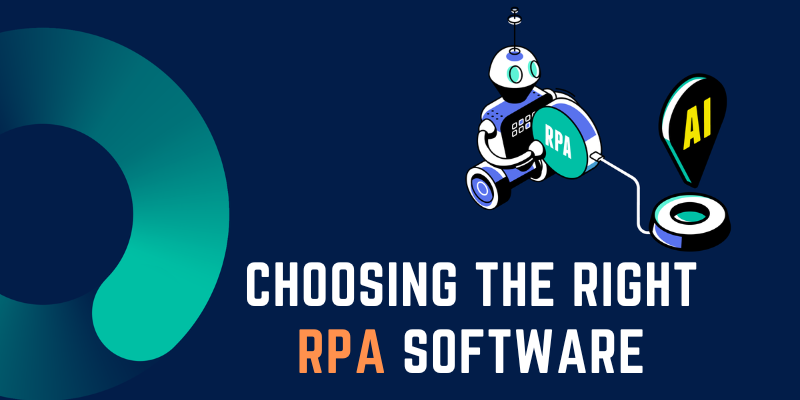Robotic Process Automation (RPA) has emerged as a powerful tool to streamline operations, reduce costs, and improve efficiency. However, with the plethora of RPA software options available, selecting the right one for your organization can take time and effort. In this blog, we will explore How to Choose the Right RPA Software for Your Organization. By enrolling in RPA Training In Coimbatore, you can equip yourself with the necessary skills to harness the power of automation effectively.
Introduction to RPA Software
Before diving into the selection process, let’s understand RPA software. RPA software is designed to automate repetitive, rule-based tasks using software bots or “robots” to mimic human actions. These robots can complete tasks such as data entry, data extraction, data validation, and more.
Assess Your Organization’s Needs
The first step in selecting the best RPA software is to examine your organization’s unique requirements. This involves understanding your current processes, pain spots, and the areas where automation may have the most impact. Take a look at the following:
Process Identification: Determine which procedures are most suitable for automation. Look for jobs that are repetitive, rule-based, and can be easily standardized.
Scalability: Determine whether the RPA software can grow with the expansion of your company. Select software that will meet your demands in the future.
Integration: Assess the level of integration that the RPA software offers with your existing systems, such as CRM, ERP, or other applications.
Compliance: If your company operates within a regulated sector, make sure that the RPA software is capable of meeting compliance requirements. If you want to learn more about RPA, consider enrolling in RPA Training In Madurai to equip yourself with the necessary skills and knowledge.
Understand the User-Friendliness
An RPA software platform must be simple to use. Since only some employees have technological experience, the programme must be easy to use. Keep an eye out for these features:
Low-Code/No-Code Development: Software with a low-code or no-code interface allows non-technical users to create automation workflows.
User Interface (UI): An intuitive and easy-to-use UI will make it easier for your team to design and maintain automation processes.
Evaluate the Range of Automation Capabilities
The capabilities of RPA software can vary widely. It’s essential to evaluate what types of automation are supported by the software. Consider the following:
Attended vs Unattended Automation: Determine if the software supports attended automation (human-robot collaboration) or unattended automation (fully autonomous bots).
Cognitive Automation: Some RPA software incorporates artificial intelligence (AI) and machine learning (ML) for more complex tasks. Assess whether cognitive automation capabilities are necessary for your organization.
Orchestrator: A centralized control system, an orchestrator, is vital for managing and monitoring automation processes. Enrolling in the RPA Training In Hyderabad can provide you with the knowledge and expertise needed to excel in the dynamic automation field.
Vendor Reputation and Support
The reputation and reliability of the RPA software vendor play a significant role in your decision-making process. Consider the following:
Vendor Experience: Research the vendor’s track record, customer reviews, and case studies to ensure they have experience in your industry.
Support and Training: Check if the vendor offers adequate training and support to help your team get the most out of the software.
Community and Ecosystem: A strong user community and ecosystem can provide valuable resources and best practices for your RPA implementation.
Total Cost of Ownership (TCO)
It’s essential to have a clear understanding of the total cost of ownership for the RPA software. Consider the following cost factors:
Licensing Costs: Understand the pricing model, whether it’s per robot, per user, or other metrics.
Implementation Costs: Factor in the cost of implementation, including consulting, development, and integration.
Maintenance and Support: Consider ongoing maintenance and support costs to keep the RPA software running smoothly.
Choosing the best RPA software for your company is a crucial decision that can have a significant impact on your efficiency and production. You may make an informed decision that corresponds with your business objectives by reviewing your organization’s demands, considering user-friendliness, evaluating automation capabilities, examining the vendor’s reputation, and comprehending the total cost of ownership. When deployed effectively, RPA may be a game changer, so take your time in selecting the software that best suits your organization’s specific needs. Enrolling in the RPA Training In Pondicherry can provide aspiring individuals with the necessary knowledge and expertise in RPA.





